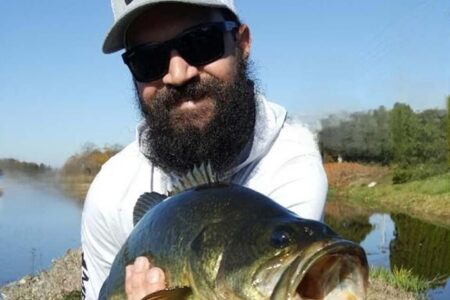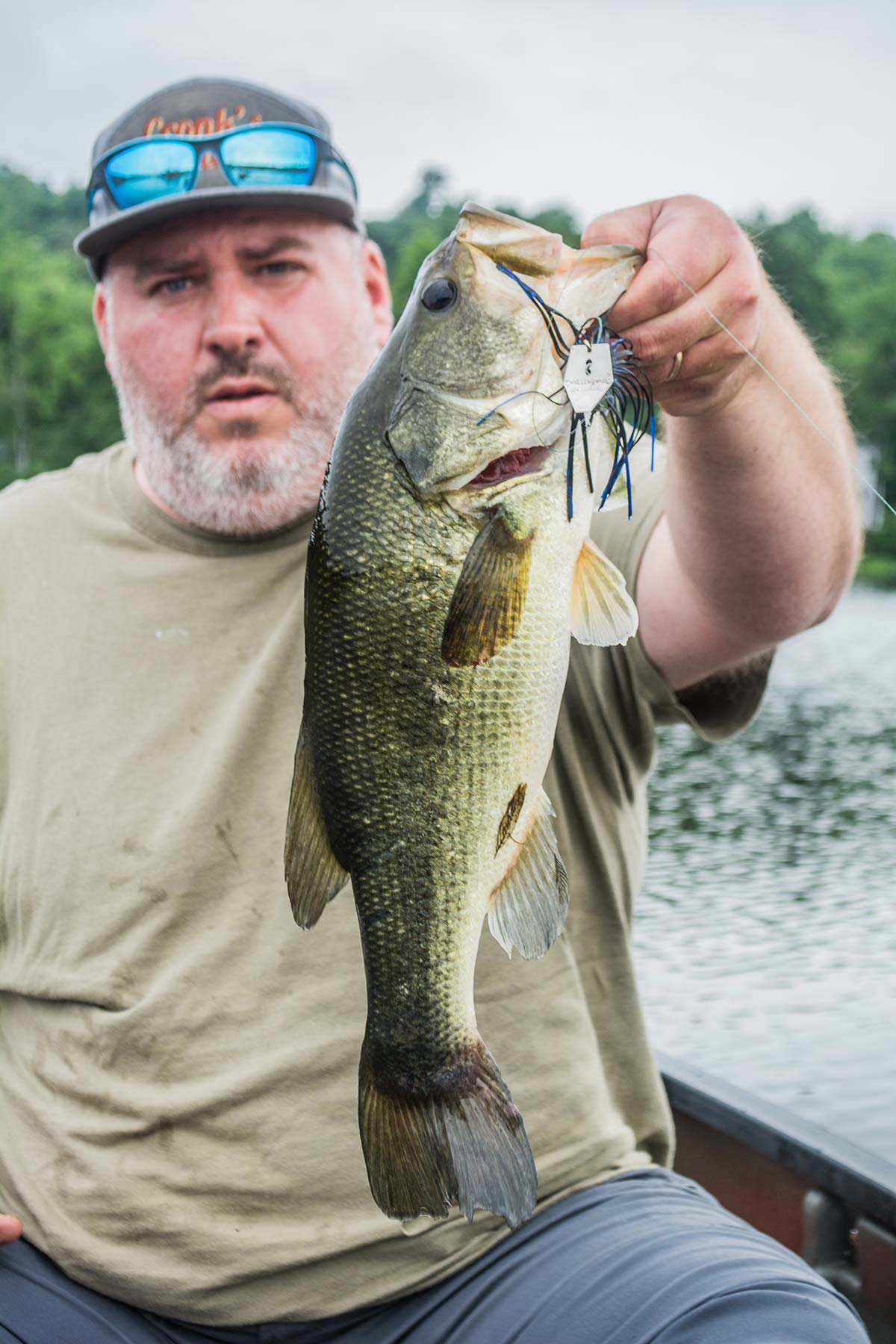
Sometimes a few good vibrations offer freshwater excitations.
When Brian Cronk invited me fishing on a local lake, I found that despite its shallow depth, the bass didn’t want a topwater plug. Fluttering a Senko on retrieve, that’s what worked. For more than several years, some we caught measured better than 20 inches. Traditional style worms also worked, and since wormin’ is my favorite way to go, I was alright with the status quo.
And then, after he fished one morning with another friend, Brian told me a weed harvester had been at work, which I didn’t take as good news; but by completely overturning the way we fished, that weed harvester was really the harbinger of a whole new deal. No longer throwing worms at weed edges and into pockets, Brian began slaying the bass on Chatterbaits.
I quickly became a reluctant convert, just enough of a convert that I can write about the lure. I haven’t mastered it up to par with Brian, so I talked with him on the phone just before I began writing this article.
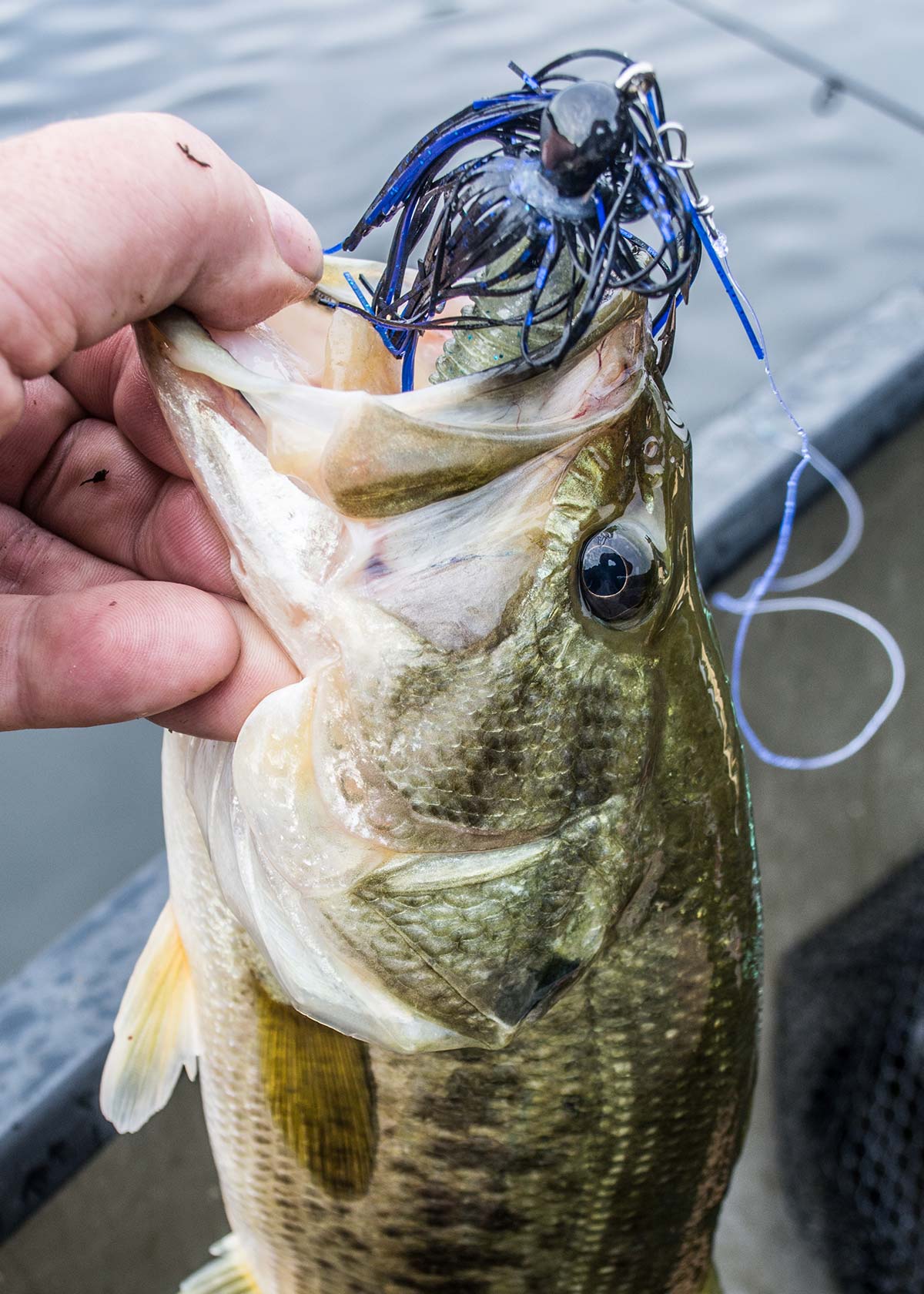
Out In The Open
From what I’ve experienced, Chatterbaits become effective when water temperatures get out of the low 50’s in April, but I’ve read about them working by lift-drop jigging when the water’s still in the 30’s. Lakes, reservoirs, and ponds, however, retain only a little residual vegetation in April as fresh greenery begins to grow that becomes especially evident in May, so besides casting to whatever greenery’s left, and brush, docks, or timber in the water, you’ll be fishing in the open early on when water temps are climbing.
“Chatterbaits are effective there,” Cronk said. “Retrieves vary by the time of year. A slow one is how I start, and when I start, there’s no weeds.”
You can bend the metal resistance plate or blade in front of the jighead for a shallower or deeper retrieve, and as I mentioned, early in the year you can jig. A strong uplift creates powerful vibrations.
With the harvester thoroughly eliminating weeds, when we fish the lake throughout the summer months, open water remains productive, and Brian’s enthusiasm for the Chatterbait grows with every outing. I try to keep pace. If the retrieve is too slow, some weeds near bottom do collect on the blade and on the hook. A quick retrieve, however, triggers forceful reaction strikes whether we fish early in the morning, after sunset, or any other time of day.
“Experiment with retrieve speed when the water heats up. I use a reel with a 7:3 gear ratio and a parabolic rod. It has a great deal of bend, so it will allow you to set the hook when a stiffer rod would pull the lure out of the mouth. Mine is a St. Croix Mojobass fiberglass rod. The baitcaster will allow you to throw a Chatterbait out quicker, because the use is all in the thumb,” Cronk said. Keep in mind that a spinning reel takes a moment for the opposite hand to open the bail.)
A steady retrieve often seems to be all the bass ask for, but like any jig, whether there’s a metal plate in front of it or not, the creativity and cadence you give a retrieve is entirely between you and the bass.
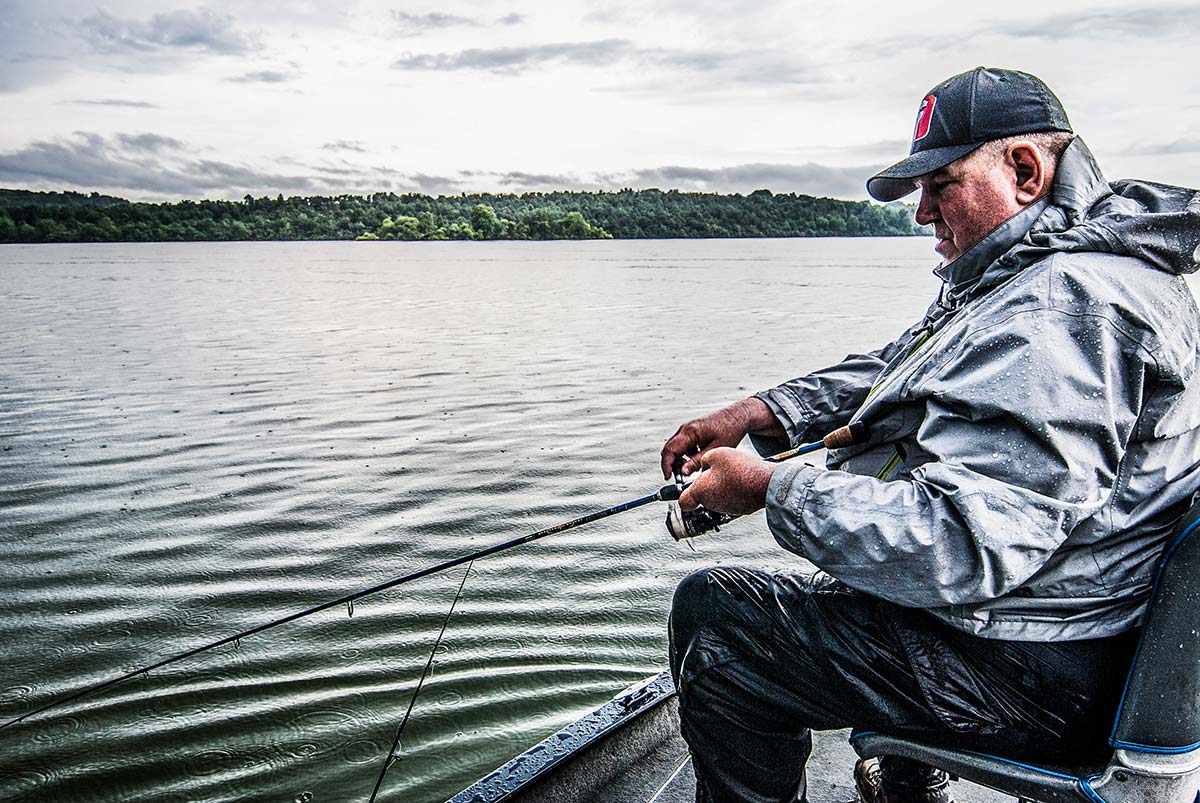
Comparisons & Advantages
When it comes to comparing Chatterbaits with spinnerbaits, it seems as if many equate the two, but they produce different kinds of vibrations. You wouldn’t think a Binsky bladebait produces the same sort of vibration a spinnerbait does, and you can notice a difference in feel between all three types of lures. If bass aren’t used to it, the way a Chatterbait vibrates can be an advantage where the fish are pressured, and in New Jersey, they’re pressured almost anywhere you go. Chatterbaits have been on the market for two decades, and they’re quite popular, but spinnerbaits seem to be used more on any given body of water.
If spinnerbaits do dominate where you fish, the vibrations of a Chatterbait might take educated bass by surprise, but in any event, any of us who fish by judging differences between our presentations will feel the difference, too. A big difference exists between a spinnerbait and an inline spinner, also, and the Chatterbait, while vibrating nothing like an inline spinner, rides in a straight line as the inline does, except that a Chatterbait wiggles and shakes side-to-side, a tantalizing swimming action that helps draw those reaction strikes. And spinnerbaits vibrate side-to-side only slightly, a Colorado blade making the frame wiggle tightly, though by comparison to Chatterbaits, spinnerbaits are tame.
Although spinnerbaits do get through weeds and woody cover with greater ease than standard Chatterbaits, you can rip a Chatterbait when you begin to feel weeds bunch on it, which sometimes triggers a strike. And a modicum of weeds collected on the blade won’t stop a Chatterbait from remaining effective as it continues to vibrate and shake.
Cronk thinks slipping a trailer onto the hook tempts more and bigger bass, and believes that the bodily appearance, in addition to added vibration and action, really makes the difference. It’s the opposite principle to finesse. Big baits do account for many of the largest bass in the state getting caught. For trailers, the Keitech Fat Swing Impact 4.3 and the Swimming Senko are Cronk’s favorites, and he claims to be able to distinguish the throb from the paddletail of either. If he can — so can bass. Until last year, I just kept to the little dual-tail trailer that comes in the package, and I caught plenty of bass as big as 20 inches. Brian remarked to me that the lure’s effective that way, but why not give big bass a bigger mouthful?
It’s not just the size but the action that counts. And a hefty trailer will slow retrieve speed. “Big fish don’t necessarily like a fast-moving bait,” Cronk said, adding “You don’t have to burn it. It lines up as a vibrating jig, and with no paddletail, it doesn’t have as much rear action.”
I hadn’t put a large trailer on because the bulky presentation goes against my sense of economy, but last year, I learned to appreciate firsthand how a soft bait’s vulnerability in addition to that hard vibration catches big bass. There’s no arguing against Brian’s persuasion. He’d been catching more bass than me and bigger ones, too. This year, I’m going with Swimming Senko trailers, but I do have many other options besides Brian’s two favorites.
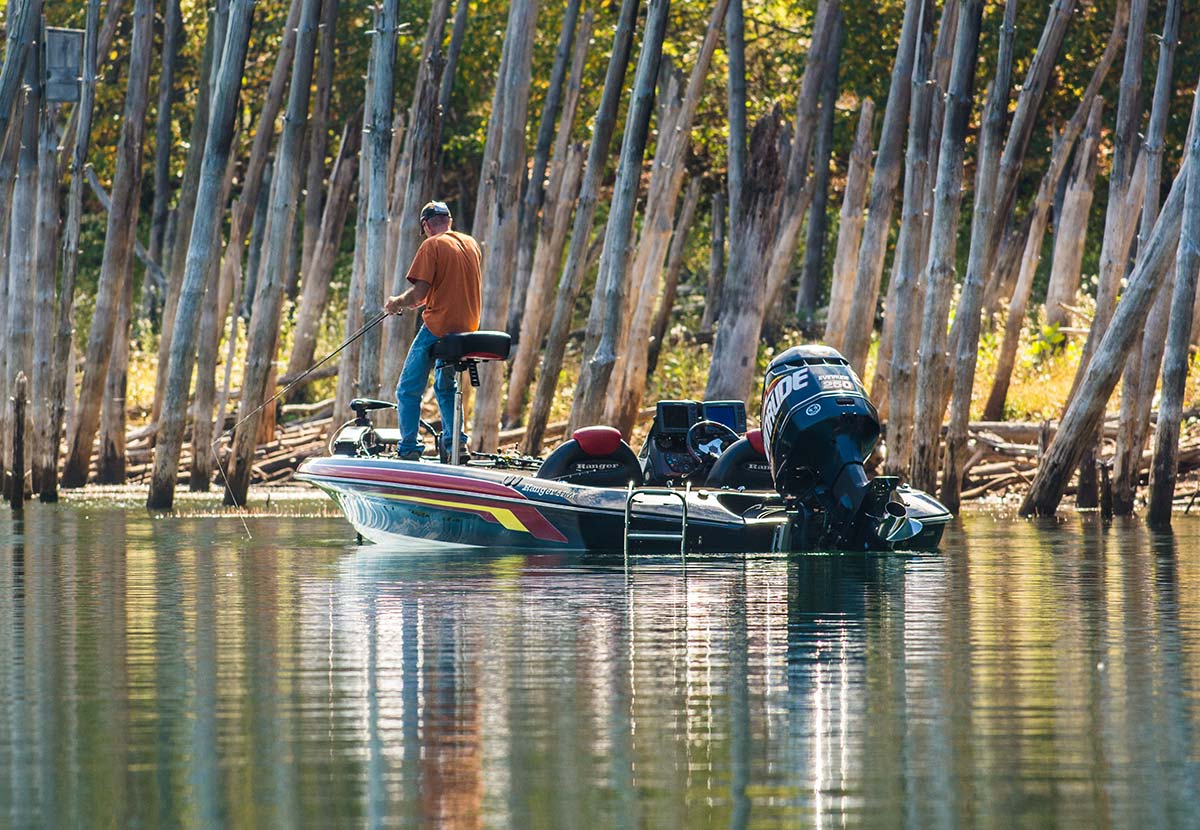
Wood & Weeds
Because I’m also thinking of fishing Chatterbaits next to the cover, brush, and deadfalls of other lakes, I’m keen on new developments. Open water may satisfy me for a while yet, but the lure seems made for the opportunities of wood, as I’ll disclose in some detail shortly. First, keep in mind that out in the open, a Chatterbait can draw bass from yards away. I’ve witnessed a similar situation in clearwater ponds when bass have dodged what they were doing and shot four or five yards to grab a worm that’s just touched down. It makes me wonder how far some of the bass we’ve caught on Chatterbaits have come. However, bass in open water aren’t necessarily feeding actively. They are intent on feeding when staging in cover, though. If the sun’s out, they await in shadow, ambushing whatever prey gets sunlit close to the edge of where they lurk.
Since a standard Chatterbait will get hung up more easily than a spinnerbait, it’s that edge of cover I would focus on when using one. With its vibrations raking the lateral lines of a bass, the lure gets hit harder than it shakes. They get slammed in open water; I certainly would expect the same from cover.
Cronk says a trailer helps a Chatterbait “bounce off structure,” but he remains concerned about lure loss. With the added advantage of a casting rod’s accuracy, he may yet see docks and brush piles as a bonanza of opportunity in going live at exercising casting skills. A quick retrieve covers a lot of water, but working at getting casts into multiple positions – covering spots thoroughly – is a good idea. Pressured bass don’t always respond on first try, and multiple bass reluctant to hit might station in different nooks within one set of such cover.
When I fish wood in the water, I usually fish wood I can see, but more of it may be under the surface and out of sight. Since the hook of any vibrating jig should be in an upright position, it’s less likely to snag, but fish wood you can’t see, and you will manage to get hung up.
An alternative that I hinted at earlier is the new Z-Man CrosseyeZ Chatterbait that has an adjustable, coated, multi-strand wire brushguard that deflects wood. Wouldn’t that be an inevitable development? Think of the opportunities among timber fields. You can fish shallows and get down deep where you can’t see the wood, all in the same retrieve. The brushguard will help deflect weeds, too. For the 20 years they’ve been around, Chatterbaits have been fished among weeds.
In any case, you can probe a timber field or a weedline faster than you will by jigging or worming. You can slow-roll a spinnerbait in the depths if you like, but you won’t release the vibration you can muster by snapping the rod upward against a Chatterbait blade. And the new CrosseyeZ has a newly designed jighead that collides with the blade, so you can produce even more commotion for the lateral line of a bass to pick up.
“I suggest you tie one onto your line and get active with it,” Cronk said, adding “There are so many variables that go into catching fish, so don’t present the approach in one way.”



